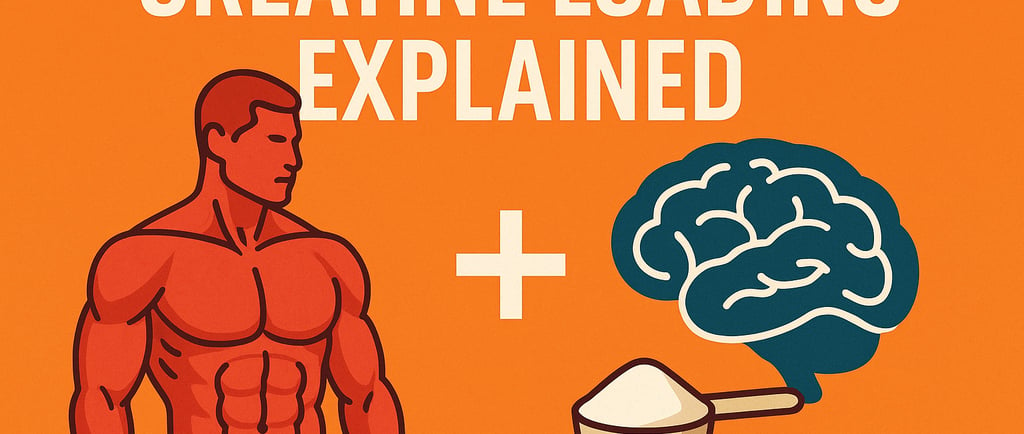Creatine: Why Loading Works, How It Boosts Body & Brain, and Why 5g Might Not Be Enough
Creatine is one of the most researched supplements in sports nutrition — and for good reason. It’s a powerhouse for strength, recovery, and even brain health. But if you’ve been taking the standard 5 grams a day from the start, you might be leaving results on the table.
MUSCLE BUILDING
8/10/20252 min read


What Creatine Actually Does
Creatine is a compound your body naturally produces from amino acids, and you also get it from foods like red meat and fish. In muscle and brain tissue, creatine is stored as phosphocreatine — a quick-access energy reserve your body taps into for high-intensity, short-duration activity.
In the gym, that means you can push harder and squeeze out extra reps before fatigue sets in.
In the brain, it means better cellular energy for focus, memory, and mental resilience
Why Front-Loading Works
If you start with just 5g a day, it can take 3–4 weeks to fully saturate your muscles with creatine. A front-loading phase floods your muscles with creatine faster, so you feel the benefits in days, not weeks.
Typical Loading Protocol:
20g per day for 5–7 days, split into 4 doses (5g each) to minimize stomach discomfort.
Then drop to a maintenance dose of 3–5g daily.
Why It Works: Your muscles have a creatine “storage limit.” Loading just fills the tank more quickly. Once it’s topped off, a smaller dose maintains it.
Why 5g Might Not Be Enough for Everyone
The “5g a day” rule is based on an average male of about 150–180 lbs. Larger athletes, heavy lifters, and those with more muscle mass often need more to stay saturated — especially if they don’t eat much red meat or fish.
If you weigh 200+ lbs or train at high intensity multiple times a week, 6–8g per day might keep you better topped up.
Brain Health Benefits
Creatine isn’t just for biceps — it’s fuel for your brain. Studies show creatine can:
Improve short-term memory and reasoning skills, especially when sleep-deprived.
Support mood regulation by improving brain energy metabolism.
Protect against neurodegeneration by buffering against cellular energy deficits.
This is why creatine is being studied for conditions like depression, Parkinson’s disease, and traumatic brain injury recovery.
Will Creatine Make You Bloated?
This is one of the most common fears — but it’s misunderstood. Creatine draws water into your muscles, not under your skin. That means your muscles look fuller, not “puffy.”
Yes, the scale may go up by 2–4 lbs during loading, but that’s intracellular water — exactly where you want it. It helps with performance, nutrient delivery, and muscle recovery.
Other Things to Know
Timing isn’t critical — take creatine whenever it fits your routine. Just be consistent.
Pair with carbs post-workout for slightly better uptake (optional but effective).
Hydration is key — creatine increases muscle water content, so make sure you’re drinking enough.
Safe long-term — decades of research show no harm to healthy kidneys when taken as directed.
Bottom Line
If you want to feel the benefits of creatine fast, front-load with 20g per day for a week, then maintain with 5–8g daily depending on your size and training. Expect better gym performance, faster recovery, improved cognitive function, and fuller muscles — without the soft, bloated look many fear.
Creatine is more than a bodybuilding supplement — it’s an energy upgrade for your body and your brain.
Your go-to source for supplement insights and advice.
Sign up to recieve newest blogs and newsletters
© 2025. All rights reserved.
